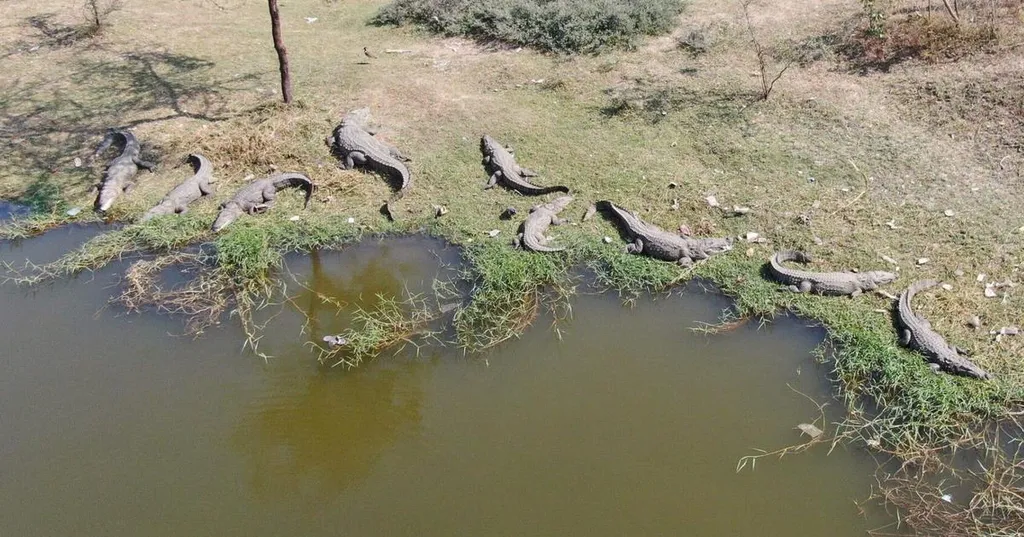In the dense mangroves and marshes of India’s Bhitarkanika National Park, a delicate balance is being disrupted. As conservation efforts for the saltwater crocodile (Crocodylus porosus) have successfully increased their population, so too have the instances of human-crocodile conflict. A recent study published in ‘Frontiers in Amphibian and Reptile Science’ (which translates to ‘Frontiers in Amphibian and Reptile Science’ in English) sheds light on this growing issue, offering insights that could shape future conservation strategies and mitigate risks for both humans and crocodiles.
Lead author Satya Narayan Parida, from the College of Fisheries at Rani Lakshmi Bai Central Agricultural University in Madhya Pradesh, India, and his team have been meticulously tracking the dynamics of human-crocodile interactions. Their findings reveal a stark reality: between 2019 and 2025, there were 28 fatal attacks on humans in areas adjacent to the national park. This statistic underscores the complex challenge of conserving large predators while ensuring human safety.
The study highlights a significant increase in the crocodile population, with an annual growth rate of approximately 36.4 individuals over the past 25 years. This growth is attributed to government investment policies focused on C. porosus conservation. However, the population trends are anything but simple. Adult crocodiles follow a moderately nonlinear trend, while sub-adults exhibit a highly complex pattern. Combined, the adult and sub-adult populations are increasing by 12.6 individuals per year, indicating robust growth.
“Recovering and conserving large predator populations is inherently challenging due to the risks they pose to people and their livelihoods,” Parida explains. This statement encapsulates the core dilemma faced by conservationists and policymakers. The study’s findings are crucial for developing strategies to reduce human-wildlife conflict (HWC), a pressing issue that affects not only the local communities but also the broader ecological and economic landscape.
The implications of this research extend beyond the immediate conservation concerns. For the energy sector, which often operates in proximity to wildlife habitats, understanding and mitigating HWC is essential. Energy projects, such as hydropower plants and transmission lines, can inadvertently disrupt ecosystems and increase the likelihood of conflicts. By integrating the insights from this study, energy companies can adopt more wildlife-friendly practices, thereby reducing the risk of incidents that could delay projects or incur additional costs.
Moreover, the study’s emphasis on the nonlinear and complex trends in crocodile populations underscores the need for adaptive management strategies. Energy sector stakeholders can benefit from this approach by incorporating flexible planning and mitigation measures that respond to dynamic ecological conditions.
As the world grapples with the dual challenges of biodiversity conservation and sustainable development, studies like this one provide a roadmap for balancing these competing priorities. By leveraging scientific research, policymakers, conservationists, and industry leaders can work together to create a future where both wildlife and human communities thrive.
In the words of Parida, “The findings of this study will aid in creating strategies to reduce the risk of HWC.” This statement resonates with the broader goal of harmonizing human activities with the natural world, ensuring that conservation efforts do not come at the expense of human safety and economic prosperity. As we move forward, the lessons learned from Bhitarkanika National Park will undoubtedly shape the future of conservation and conflict mitigation strategies worldwide.

